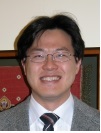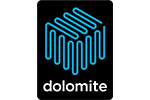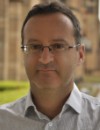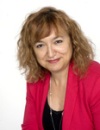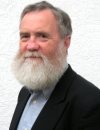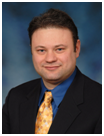Thursday, 22 January 2015
Agenda | ||||
08:00 | Registration | |||
08:50 | Welcome Address | |||
Session 1: Developments in Materials and Microfabrication Technologies / Session Chair: Dr. Soumyo Mukherji | ||||
09:00 |
| |||
09:40 | Q/A Session | |||
09:45 | Pumpless Handling of Liquid on Wettability-Patterned Surface Microfluidic Platforms | |||
10:15 | Q/A Session | |||
10:20 | Detection of Flowing Bubbles in a Lab-On-A-Chip by Measuring Impedance Fluctuations | |||
10:45 | Q/A Session | |||
10:50 | Dilution of Samples using Generalized Mix-Split Steps on a Digital Microfluidic Platform | |||
11:25 | Q/A Session | |||
11:30 | Coffee Break and Networking in Exhibition Area | |||
Session 2: Paper Based Devices in Developing World / Session Chair: Dr. Laura Lechuga | ||||
12:00 | A Fully-Printable Paperfluidic Device for Oral Health | |||
12:35 | Q/A Session | |||
12:40 | Paper-based Fluidic Devices: from Fabrication to Assay Quantification | |||
13:15 | Q/A Session | |||
13:20 | Poster Evaluation | |||
13:35 | Lunch Break and Networking in Exhibition Area | |||
Session 3: Droplet-Based Digital Microfluidics / Session Chair: Dr. Vijay Mathur | ||||
14:20 | Droplet based digital microfluidics | |||
14:55 | Q/A Session | |||
15:00 |
| |||
15:15 | Ultra-Low-Voltage Manipulation of Microdroplets using Electrochemical Redox Process of Smart Polymers | |||
15:50 | Q/A Session | |||
15:55 | Coffee Break and Networking in Exhibition Area | |||
Session 4: Applications of Microfluidics | ||||
16:10 | Concentrating Analytes by Suppressing the Coffee Ring Effect in Extreme Conditions. | |||
16:35 | Q/A Session | |||
16:40 | Microdroplet Technology: Study of Quorum Sensing in Bacteria | |||
17:00 | Q/A Session | |||
17:05 | Bovine brucellosis Biosensors – maintaining India’s White Revolution | |||
17:25 | Q/A Session | |||
17:30 | End of First Day of Conference | |||
Friday, 23 January 2015
09:30 |
| |||
10:10 | Q/A Session | |||
10:15 | The Use of Microfluidic Reactors for the Synthesis of Biomedical Materials | |||
10:55 | Q/A Session | |||
11:00 | Coffee Break and Networking in Exhibition Area | |||
Session 5: Biomedical Applications of Microfluidics/ LOAC: I / Session Chair: Dr. J Michael Koehler | ||||
11:30 |
| |||
12:10 | Q/A Session | |||
12:15 | Exploiting Evanescent Waves for Developing Simple Optical Bio(Chemical) Sensors | |||
12:50 | Q/A Session | |||
12:55 | Lunch Break and Networking in Exhibition Area | |||
Session 6: Biomedical Applications of Microfluidics/ LOAC: II / Session Chair: Dr. Danilo Tagle | ||||
13:45 |
| |||
14:25 | Q/A Session | |||
14:30 | A Novel Point-of-Care Device for Clinical Diagnostics – A Case Study | |||
15:05 | Q/A Session | |||
15:10 | An Automated, Field-Portable Microscopy Platform For Clinical Diagnostic Applications | |||
15:35 | Q/A Session | |||
Session 7: Microfluidics for Single Cell Analysis and Organ on a Chip / Session Chair: Dr. John Canning | ||||
15:40 |
| |||
16:20 | Q/A Session | |||
16:25 | Human Microphysiological Systems: Organs-on-Chips for In Vitro Efficacy, Safety, and Toxicity Testing | |||
17:00 | Q/A Session | |||
17:05 | High-throughput Single-Cell Deformability Measurement Technique | |||
17:30 | Q/A Session | |||
17:35 | Poster Award Presentation & Vote of Thanks | |||
17:45 | Coffee Break and End of the Conference | |||
